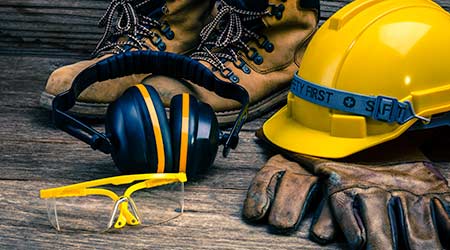Understanding OSHA and Mitigating Risks
Identifying and addressing a host of potential hazards, including flooring, that can bring OSHA inspectors into facilities
Flooring is one of many potential hazards managers need to be aware of in protecting workers, occupants and visitors and avoid problems with OSHA. OSHA can perform site inspections for several reasons, including a targeted inspection, an employee complaints or a fatality or severe injury.
Managers must recognize that OSHA provides certain workplace rights for workers. Working conditions must not pose a risk of serious harm. Workers must receive information and training in a language and vocabulary the worker understands about workplace hazards, methods to prevent them, and OSHA standards that apply to their workplaces.
Workers also must be allowed to review records of work-related injuries and illnesses. They can file a complaint asking OSHA to inspect a workplace if they believe a serious hazard exists or that their employer is not following OSHA’s rules.
OSHA has jurisdiction over 7 million work sites and carefully prioritizes complaints it receives based on severity. For lower-priority hazards with permission of a complainant, OSHA might contact the employer to describe safety and health concerns of employees and follow up with a letter providing details on alleged safety and health hazards.
The employer must respond in writing within five working days, identifying problems and noting corrective actions taken or planned. If the complainant is satisfied with the response, OSHA generally will not conduct an on-site inspection. Managers most would likely experience this type of contact with OSHA, barring a fatality or serious injury.
Identifying hazards
The first step in avoiding onsite OSHA visits is to identify and mitigate workplace hazards. OSHA’s website offers a Hazard Awareness Advisor that helps managers identify possible safety and health hazards in workplaces and directs them to OSHA standards addressing those hazards. This resource can be particularly helpful to organizations without the means to hire safety and health professionals to evaluate their workplaces.
OSHA regulations require that the use of personal protective equipment (PPE) must be the last option for controlling workplace hazards. OSHA mandates that employers use engineering and administrative controls to reduce or eliminate hazards before considering the use of PPE.
When engineering and administrative controls do not eliminate or control hazards, employers can address the residual hazard by using PPE. Studies show that the most cost-effective means of addressing workplace hazards is designing them out from the beginning.
NIOSH states that the mission of so-called prevention through design is to prevent or reduce occupational injuries, illnesses, and fatalities through the inclusion of prevention considerations in all designs that impact workers. Organizations can achieve the mission by:
- eliminating hazards and controlling risks to workers to an acceptable level at the source or as early as possible in the life cycle of items or workplaces
- including design, redesign and retrofit of new and existing work premises, structures, tools, facilities, equipment, machinery, products, substances, work processes and the organization of work
- enhancing a work environment by including prevention methods in designs that impact workers.
Providing PPE
During a site inspection, an OSHA compliance officer checks that the organization has conducted a workplace assessment for the need for PPE where engineering or administrative controls cannot eliminate hazards. Managers should address the basic hazard categories, such as impact, penetration, compression, chemical, heat, harmful dust, light and radiation. They also should review injury and accident data and chemical safety data sheets to identify known problems.
Once managers specify PPE, they also must make sure employees have proper PPE training.
Failure to provide employee training is a common violation when OSHA inquires about workplace hazards. Workers who have to wear PPE must have training on performing the following tasks:
- using PPE properly
- understanding when PPE is necessary
- knowing what kind of PPE is necessary
- understanding the limits of PPE in preventing injury
- putting on, adjusting, wearing, and taking off PPE
- maintaining PPE properly.
Related Topics:














